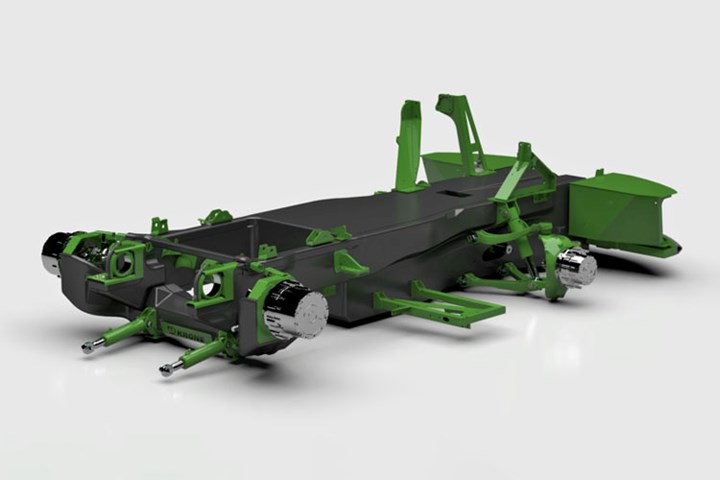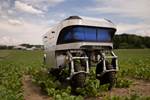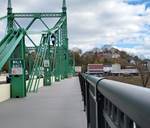Carbon fiber chassis halves weight of Krone Big X forage harvester
IFW and partners are developing and testing a CFRP chassis for agricultural vehicles, enabling new design possibilities, enhanced torsional stiffness and 50% less weight.

Structural design of the newly developed carbon fiber chassis for the Krone Big X forage harvester. Photo Credit: IFW
In order to reduce CO2 emissions in the commercial vehicle and agricultural sector, the use of material concepts such as composites are being sought to reduce the weight of the machines, most of which weigh several tons. The Institute for Manufacturing Technology and Machine Tools (IFW) at Leibniz Universität Hannover (Germany), together with its German project partners Krone GmbH & Co. KG, M&D Composites Technology GmbH and the Institute for Polymer Materials and Plastics Technology (PuK) of the Clausthal University of Technology, has developed a carbon fiber chassis for the Krone Big X in the AgriLight research project.
Particular challenges arose from the different material properties of fiber-reinforced composites and metallic materials, the associated complexity in the design of thick-walled composite structures and the integration of the new, composite-compatible design into the existing vehicle structure.
However, the new design possibilities brought on by the carbon fiber-reinforced polymer (CFRP) monocoque construction were used to create additional benefits for the customer. Among them were larger, integrated tanks and simplified cleaning of the machine thanks to closed surfaces. For the chassis’ design, IFW and PuK jointly investigated a number of different resin systems for the out-of-autoclave vacuum infusion process. Ansys (Zurich, Switzerland and Canonsburg, Pa., U.S.) Composite PrePost was used to perform the finite element simulation. Shell models of the entire CFRP structure were created as well as detailed analyses using solid models. Based on a load spectrum newly developed by Krone, design adjustments as well as optimizations in the laminate structure were made.
In addition to the design and dimensioning of the frame structure, the IFW has also researched new approaches for the composite-compatible introduction of high loads into the frame structure of commercial vehicles. With the aid of a hybrid insert concept, significantly higher loads can be introduced into the composite structures — together with classic fasteners such as screws and bolts — removing the need for prestressing forces to be borne by the laminate. The resulting CFRP chassis reduced the machine’s weight by 50% compared to the original steel frame while simultaneously increasing torsional stiffness.
Next steps in the project include the production of a chassis prototype at M&D Composites Technology. Tooling is being developed, followed by production of the monocoque’s individual shell components. The completed prototype will be subjected to dynamic structural testing at Krone’s facility, where the developed load spectrum is run on the X-Poster, validating design results and the underlying finite element models. The main objective of this test is to ensure that the carbon fiber-based chassis and the hybrid inserts used in highly stressed areas do not suffer any damage over the entire lifetime of a vehicle. To record the loads and deformations of the chassis, IFW is also implementing a measurement concept that includes Rayleigh and strain gauge sensors as well as optical 3D measurements.
The project is funded by the German Federal Ministry of Economics and Climate Protection (BMWK) as part of the Technology Transfer Program Lightweight Construction (TTP LB).
Related Content
-
PEEK vs. PEKK vs. PAEK and continuous compression molding
Suppliers of thermoplastics and carbon fiber chime in regarding PEEK vs. PEKK, and now PAEK, as well as in-situ consolidation — the supply chain for thermoplastic tape composites continues to evolve.
-
The lessons behind OceanGate
Carbon fiber composites faced much criticism in the wake of the OceanGate submersible accident. CW’s publisher Jeff Sloan explains that it’s not that simple.
-
Infinite Composites: Type V tanks for space, hydrogen, automotive and more
After a decade of proving its linerless, weight-saving composite tanks with NASA and more than 30 aerospace companies, this CryoSphere pioneer is scaling for growth in commercial space and sustainable transportation on Earth.



















